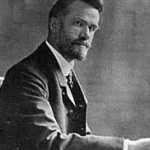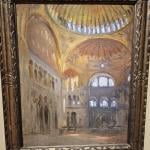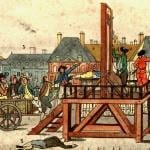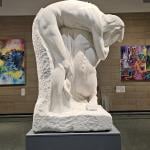The cross and the lynching tree are separated by nearly 2,000 years.
Professor James H. Cone starts a must-read work with this fact and continues with the comparison. If you are my age, fifty-five at the time of writing, then your grandparents generation lived when the murder of an African-American was open and public spectacle.
In its heyday, the lynching of black Americans was no secret. It was a public spectacle, often announced in advance in newspapers and over radios, attracting crowds of up to twenty thousand people.
I am a traditional Christian (first and foremost) and a political conservative. As a result, I believe that if we do not remember history, then we will repeat the evils of history. This is why the atheism of Stalin’s Soviet Union and the butchering of millions of Christians should not be forgotten. We should not forget the Holocaust. We must not allow the Turkish government to lie about Armenian genocide.
 We certainly cannot and should not forget the “lynching tree,” so recent that there folks alive who are still scarred by the memories and all American. God help us.
We certainly cannot and should not forget the “lynching tree,” so recent that there folks alive who are still scarred by the memories and all American. God help us.
An old hymn when I was a boy said the cross “was an emblem of suffering and shame.” When we see the cross merely as jewelry or a symbol, we lose the force of this truth. Professor Cone says:
Until we can see the cross and the lynching tree together, until we can identify Christ with a “recrucified” black body hanging from a lynching tree, there can be no genuine understanding of Christian identity in America, and no deliverance from the brutal legacy of slavery and white supremacy.*
This was a man raised up to batter down the heresy of white supremacy with a holy rage.
As I read the recent history of lynching, Waco Texas I am talking about you, I continue to be horrified. Doubt me?
Google Ida Wells. Now. As the Spirit said to Augustine: read. This happened:
Hundreds of kodaks clicked all morning at the scene of the lynching. People in automobiles and carriages came from miles around to view the corpse dangling from the end of a rope. . . . Picture cards photographers installed a portable printing plant at the bridge and reaped a harvest in selling the postcard showing a photograph of the lynched Negro. Women and children were there by the score. At a number of country schools the day’s routine was delayed until boy and girl pupils could get back from viewing the lynched man. —The Crisis 10, no. 2, June 1915, on the lynching of Thomas Brooks in Fayette County, Tennessee
Stop.
Think about it. Don’t dismiss it. Five thousand people were lynched.
There is more than a little to criticize in the positive theology that Cone developed. Yet just as I can admire Churchill for getting the main thing right, so I admire Professor Cone.
He got the main thing right.
————————————
*My Dad and Professor Cone were in the same seminary at the same time!












